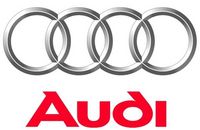Supercomputer Makes A Big Impact At Audi
INGOLSTADT – November 5, 2008: When Christopher Rhody starts a crash test, everything stays nice and quiet. No loud crashing noises, no broken glass and no bent fenders. The Audi employee responsible for developing side and head protection simulates crash situations on a computer. New supercomputers now make these crash simulations even more precise and realistic. The “cluster” – a collection of 608 processors – achieves over 29 teraflops of processing power, which corresponds to 29 billion computer operations per second. All this makes it the fastest computer in the automotive industry – and one of the 100 fastest in the world (ranked 81st).
“The new supercomputer accelerates simulation workflows several times over. With our constantly growing model range it’s essential for every model to be put through its paces during development in every conceivable accident scenario,” said Dr. Ulrich Widmann, Head of Vehicle Safety Development at Audi. The faster the computer, the more definitive and certain the accident simulation will be. Developers conduct about 5,000 simulations each week – from frontal crashes to special component tests – which allow them to determine and correct possible weak points prior to construction even before the first prototypes are constructed.
Crash simulations make it possible to develop cars according to current market conditions, in accordance with customer requirements or findings from Audi’s own Audi Accident Research Unit (AARU) – as Bernhard Gallenberger, who is responsible for planning the supercomputer environment at Audi, confirms. “The new supercomputer cluster helps to safeguard the quality of all Audi components,” Gallenberger said.
The newly acquired equipment is also highly efficient. The 320 servers of the HP ProLiant BL460c computer are mounted in eight two-meter high racks and therefore require about 30 percent less space than regular crash simulation computers. The cluster’s efficient cooling system also uses 30 percent less energy, with impressive energy consumption of just 86 kilowatts (kW) instead of the usual 115 kW.
AUDI AG had good reason to expand its inventory of computers in order to keep pace with the technical challenges brought by its growing model range. Without extensive crash simulations, vehicle development would no longer be possible due to the increasing complexity of cars as well as current testing regulations. Product quality can be significantly improved even further through the use of computer simulations.
A single car model goes through about 1,000 simulations per week during its 48-month development phase. Before the first prototype is built, the virtual car has already completed more than 100,000 computer simulations. Computing these can take anywhere from 30 minutes to up to a week, depending on the complexity of the accident. When the developers finally conduct the real crash tests, the cars have already achieved an extremely high standard of safety through the use of the computer simulations.



